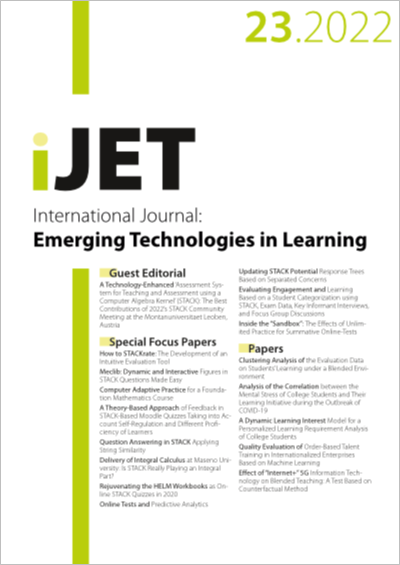Effect of “Internet+” 5G Information Technology on Blended Teaching: A Test Based on Counterfactual Method
DOI:
https://doi.org/10.3991/ijet.v17i23.36025Keywords:
blended teaching, 5G information technology, teaching effect, talent cultivation, counterfactual methodAbstract
Blended teaching is becoming an important way of educational reform and development. However, empirical studies on the effectiveness of blended teaching vary widely. From the perspective of “Internet+” 5G information technology application, this paper takes internship data of undergraduates who implement blended teaching in accounting majors in eight local public universities as research samples and uses counterfactual methods to discuss the application of “Internet +” 5G information technology on the effectiveness of blended teaching. The results show that students’ grade point average, educational level, and whether there is a vocational qualification certificate have a significant impact on internship performance. Students’ gender, residence, English certificate, and internship location have no significant impact on internship performance. This paper provides a useful exploration for the reform of classroom teaching in universities in the “Internet +” era and puts forward evidence for the promotion and application of 5G information technology and blended teaching.
Downloads
Published
How to Cite
Issue
Section
License
Copyright (c) 2022 Chunwei Han, Jinyan Huang

This work is licensed under a Creative Commons Attribution 4.0 International License.



